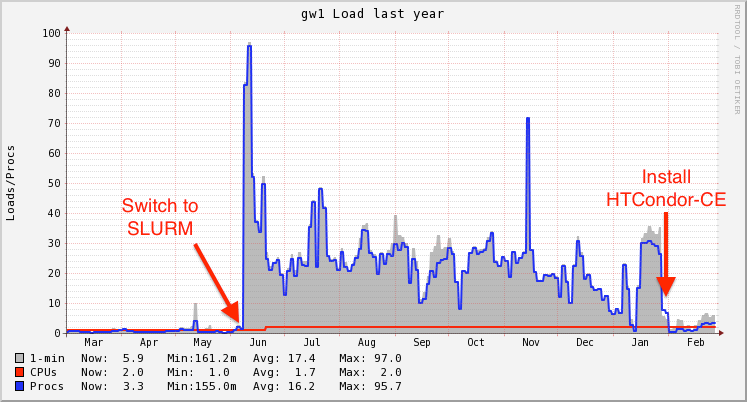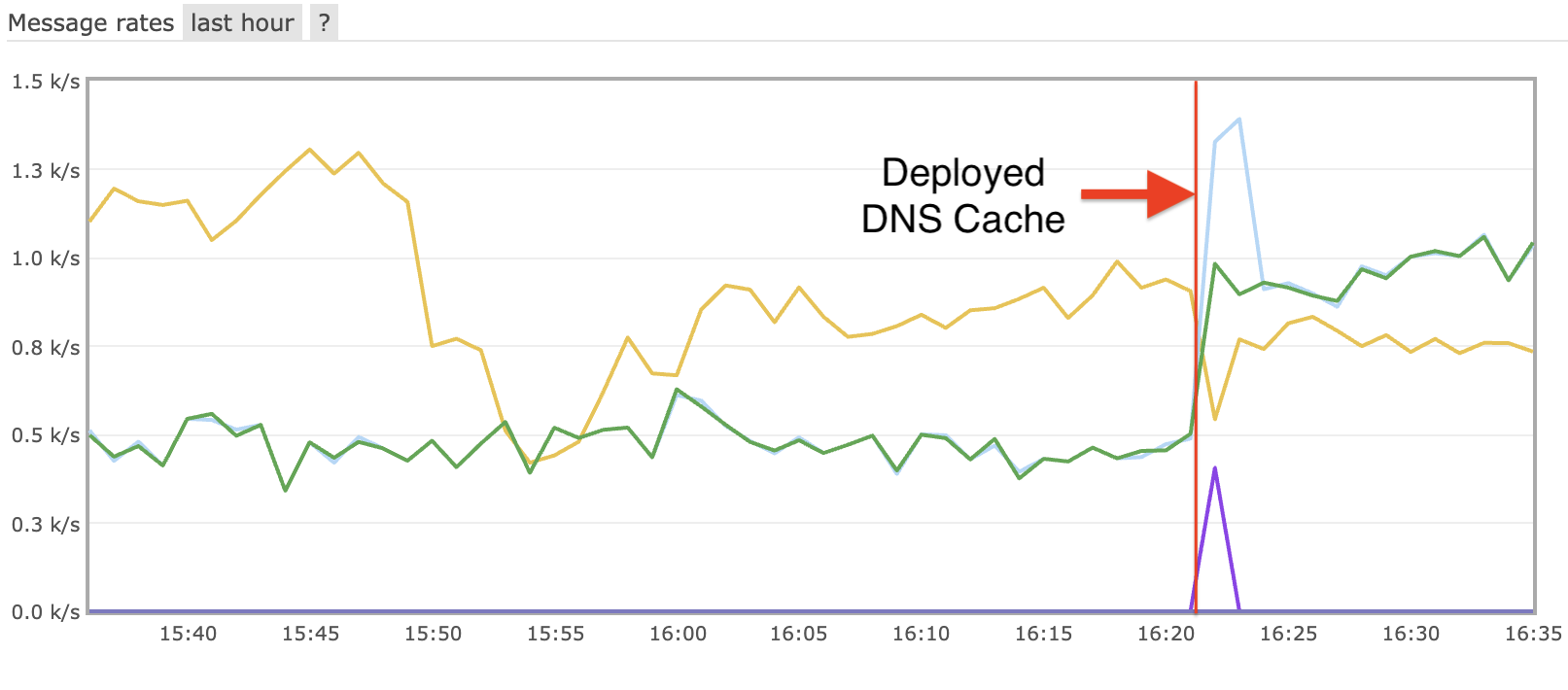Moving from a Globus to an HTCondor Compute Element
When we switched Tusker from PBS to Slurm, we knew that we would have issues with the grid software. With PBS, Globus would use the scheduler event generator to efficiently watch for state changes in jobs, ie idle -> running, running -> completed.. But Globus does not have a scheduler event generator for Slurm, therefore it must query each job every few seconds in order to retrieve the current status. This caused a tremendous load on the scheduler, and on the machine.
 |
| Load graph on the gatekeeper |
The HTCondor-CE also provides much better transparency to aid in administration. For example, there is no single command in Globus to view the status of the jobs. In the HTCondor-CE, there is, condor_ce_q. This command will tell you exactly what jobs the CE is monitoring, and what it believes is their job status. Or if you want to know which jobs are currently transferring input files, they will have the < or > symbols for incoming or outgoing, respectively, in their job state column.
The HTCondor-CE uses the same authentication and authorization methods as Globus. You still need a certificate, and you still need to be part of a VO. The job submission file looks a little different, instead of gt5 as your grid resource, it is condor:
Improvements for the future
Final Thoughts
And now for the obligatory accounting graphs:
 |
| Usage of Tusker as reported by GlideinWMS probes. |
 |
| Wall Hours by VO on Tusker since the transition to the HTCondor-CE |




Leave a comment